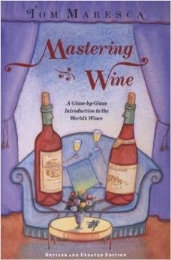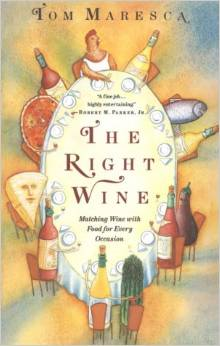Cornas is probably the least known of all the Rhône wines. Yes, you pronounce the final S. Its zone is tiny, close to the smallest in France – 155 hectares, I think. There are single Bordeaux estates larger than that; Margaux, for instance, has 250 hectares. But if you love Rhône wines, and especially if you love the wines of the northern Rhône, you know – or should know – Cornas. The 100% Syrah wines made there stand among the great red wines of France. And this tiny appellation has a roster containing an extraordinarily high percentage of top-flight producers.
.
.
Despite that, Cornas is a classic case of “no one’s paying attention.” André Dominé’s authoritative tome Wine scarcely mentions Cornas. Jancis Robinson’s Wine Grapes (while tying itself into ampelographical and etymological knots over the ancestry of Syrah and the origin of the grape’s name), in its almost exhaustive roster of where the variety is grown, doesn’t mention Cornas at all.
Conspiracy theorists can undoubtably discover a deep, dark plot here, but I don’t think it’s anything more sinister than the overwhelming reputation of Cornas’s nearest neighbors and rivals in Syrah: Hermitage and Cote Rôtie. Even Crôzes-Hermitage, sharing as it does the magic name, gets much more attention than Cornas. Those appellations simply use up all the space that writers and critics can allot to the northern Rhône.
(Most readers would be shocked to know how much the tyranny of page count and column inches affects the information that gets to them. I won’t go into the misinformation conveyed by fresh-out-of-college editors who know more about everything than writers who have many years of specialized expertise. Good editors are a treasure, bad ones a disaster, for both writers and readers.) But my focus here is the wines of Cornas, not the tribulations of wine writing.
The vineyards of Cornas are all steep and rocky. There’s nothing but granite on those slopes, and nothing but Syrah in the vineyards. This is a grape that can in other places make very peppery, very aggressive, sometimes even coarse wines. But here along the Rhône river, on the hillsides just south of the town of Vienne, Syrah often shows its best, giving wines with their fruit moderated into suavity and complexity, with a capacity for great bottle age and concomitant evolution.
.
.
I had the good fortune, many years ago, to make my first serious acquaintance with Cornas on a wine trip to the Rhône sponsored by Sopexa. We happy few journalists visited the then-already-legendary Auguste Clape. His wines were the pace-setters for Cornas quality, a position they continue to hold under his son and grandson, who now manage the vineyards and cellar with the same passion and precision he did. I have loved the wines of Cornas ever since that visit.
The major change that has occurred in Cornas in the decades since – besides the fact that I can no longer afford Clape’s wines – is that his example has stirred emulation in many other producers, so that now there is a whole cadre of excellent winemakers in this small appellation. That includes not only negociants like Jaboulet but also small producers such as Allemand, Verset, Balthazar, and of course Clape.
It was a Jaboulet Cornas – a 2006 – that we enjoyed the other evening with a dinner of a Poulet Marengo (recipe from Robert Courtine’s classic The Hundred Glories of French Cooking). This is a dish whose simplicity belies its delicious complexity, and it elicited the best from our mature bottle. A nose of blackberry, prune, and bramble preceded a palate of similar but more mature flavors. The wine was completely smooth in the mouth – none of the pestiferous Syrah aggression – thoroughly balanced and restrained. It finished very long indeed, all leather and plum.
.
.
Lovely as that match was, the Cornas had been even better with the warm, cheese-rich gougère that preceded the chicken. There the wine showed itself even deeper and more velvety, so pleasurable that we almost hesitated to go on to the main course. There was even a tiny taste of pepper in the finish, just to remind us that this elegant wine really was a Syrah.









